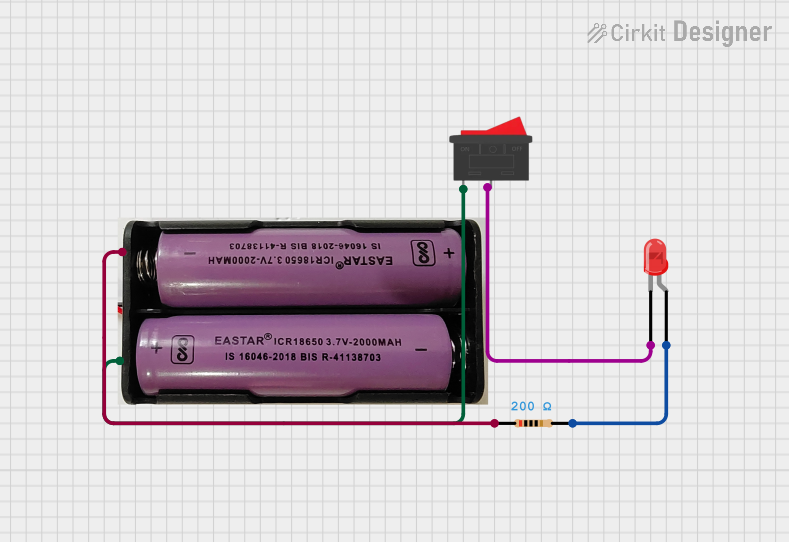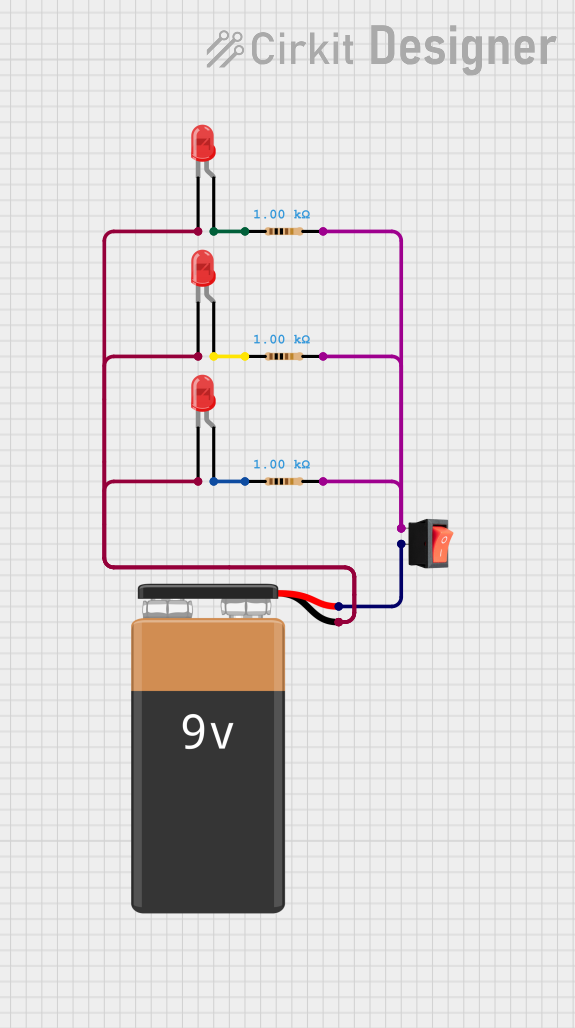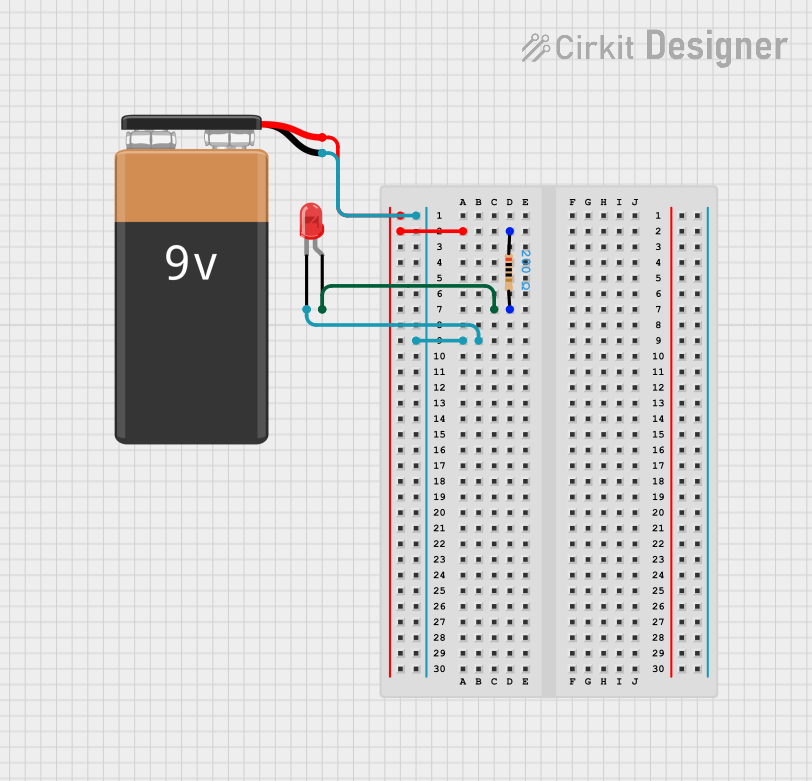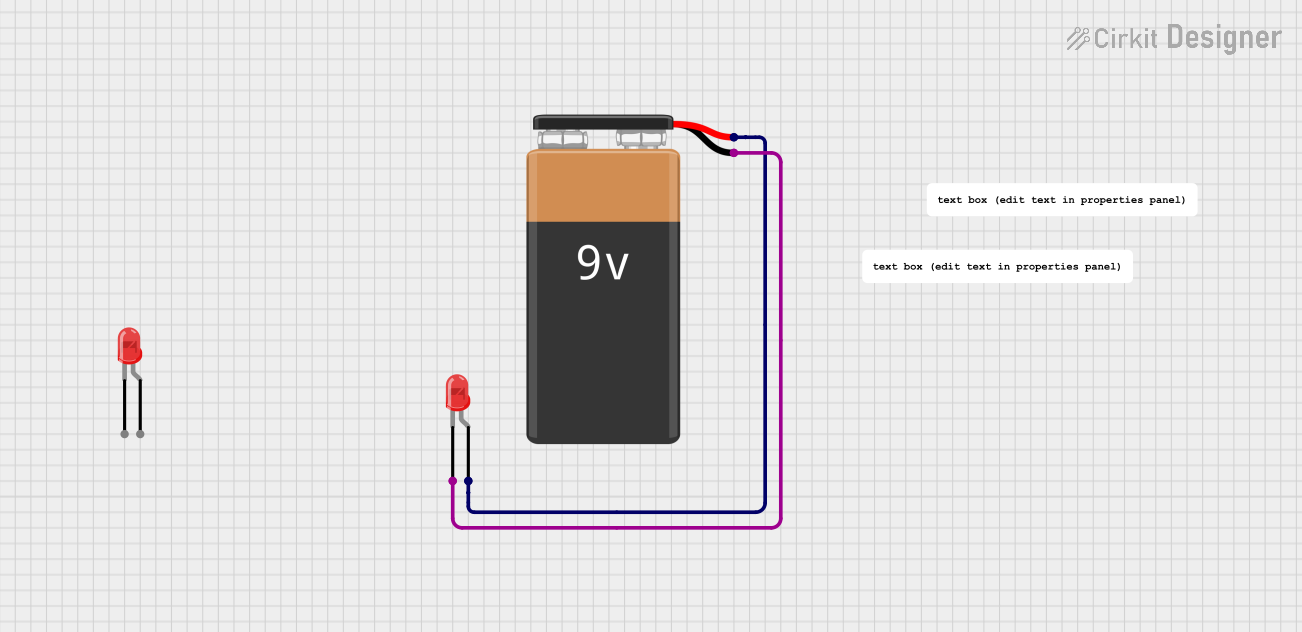
How to Use RED LED: Examples, Pinouts, and Specs

 Design with RED LED in Cirkit Designer
Design with RED LED in Cirkit DesignerIntroduction
A RED LED (Light Emitting Diode) is a semiconductor device that emits red light when an electric current flows through it. It is one of the most commonly used LEDs due to its simplicity, low power consumption, and versatility. RED LEDs are widely used in electronic circuits as indicators, status lights, and in displays.
Explore Projects Built with RED LED

 Open Project in Cirkit Designer
Open Project in Cirkit Designer
 Open Project in Cirkit Designer
Open Project in Cirkit Designer
 Open Project in Cirkit Designer
Open Project in Cirkit Designer
 Open Project in Cirkit Designer
Open Project in Cirkit DesignerExplore Projects Built with RED LED

 Open Project in Cirkit Designer
Open Project in Cirkit Designer
 Open Project in Cirkit Designer
Open Project in Cirkit Designer
 Open Project in Cirkit Designer
Open Project in Cirkit Designer
 Open Project in Cirkit Designer
Open Project in Cirkit DesignerCommon Applications and Use Cases
- Power and status indicators in electronic devices
- Digital displays and signage
- Decorative lighting
- Circuit debugging and testing
- Educational projects and prototyping
Technical Specifications
Below are the typical technical specifications for a standard RED LED. Note that values may vary slightly depending on the manufacturer and model.
| Parameter | Value |
|---|---|
| Forward Voltage (Vf) | 1.8V to 2.2V |
| Forward Current (If) | 10mA to 20mA (typical) |
| Maximum Current (Imax) | 30mA |
| Wavelength | 620nm to 750nm (red light) |
| Power Dissipation | 60mW (typical) |
| Viewing Angle | 20° to 60° |
| Reverse Voltage (Vr) | 5V (maximum) |
| Operating Temperature | -40°C to +85°C |
Pin Configuration and Descriptions
A RED LED typically has two pins: the anode (positive) and the cathode (negative). The longer pin is the anode, and the shorter pin is the cathode.
| Pin Name | Description |
|---|---|
| Anode | Positive terminal; connects to the power supply or resistor. |
| Cathode | Negative terminal; connects to ground. |
Usage Instructions
How to Use the RED LED in a Circuit
Determine the Resistor Value: To prevent damage to the LED, always use a current-limiting resistor in series with the LED. The resistor value can be calculated using Ohm's Law: [ R = \frac{V_{supply} - V_f}{I_f} ] Where:
- (V_{supply}) is the supply voltage.
- (V_f) is the forward voltage of the LED (typically 2V for a RED LED).
- (I_f) is the desired forward current (e.g., 20mA or 0.02A).
Example: For a 5V supply and a forward current of 20mA: [ R = \frac{5V - 2V}{0.02A} = 150\Omega ]
Connect the LED:
- Connect the anode (longer pin) to the positive terminal of the power supply through the resistor.
- Connect the cathode (shorter pin) to the ground.
Test the Circuit: Power the circuit and observe the LED emitting red light.
Important Considerations and Best Practices
- Polarity: LEDs are polarized components. Ensure the anode is connected to the positive voltage and the cathode to ground.
- Current Limiting: Always use a resistor to limit the current through the LED. Exceeding the maximum current can permanently damage the LED.
- Heat Management: While RED LEDs generate minimal heat, ensure proper ventilation in high-power applications.
- Series and Parallel Connections: When using multiple LEDs, calculate the resistor values for each configuration.
Example: Connecting a RED LED to an Arduino UNO
Below is an example of how to connect and control a RED LED using an Arduino UNO.
Circuit Setup
- Connect the anode of the RED LED to digital pin 9 on the Arduino through a 220Ω resistor.
- Connect the cathode of the LED to the Arduino's GND pin.
Arduino Code
// This code blinks a RED LED connected to pin 9 of the Arduino UNO.
// The LED will turn on for 1 second and off for 1 second in a loop.
void setup() {
pinMode(9, OUTPUT); // Set pin 9 as an output pin
}
void loop() {
digitalWrite(9, HIGH); // Turn the LED on
delay(1000); // Wait for 1 second
digitalWrite(9, LOW); // Turn the LED off
delay(1000); // Wait for 1 second
}
Troubleshooting and FAQs
Common Issues and Solutions
LED Does Not Light Up:
Cause: Incorrect polarity.
Solution: Ensure the anode is connected to the positive voltage and the cathode to ground.
Cause: No current-limiting resistor or incorrect resistor value.
Solution: Use a resistor with the correct value to limit the current.
LED is Dim:
- Cause: Resistor value is too high.
- Solution: Recalculate the resistor value for the desired brightness.
LED Burns Out:
- Cause: Excessive current.
- Solution: Use a resistor to limit the current to the recommended range (10mA to 20mA).
LED Flickers:
- Cause: Unstable power supply or loose connections.
- Solution: Check the power supply and ensure all connections are secure.
FAQs
Q: Can I connect a RED LED directly to a 5V power supply?
A: No, connecting a RED LED directly to a power supply without a resistor will likely damage the LED due to excessive current.
Q: How do I make the LED brighter?
A: Use a lower-value resistor to increase the current, but ensure it does not exceed the maximum forward current (20mA).
Q: Can I use a RED LED with a 3.3V power supply?
A: Yes, but you still need a current-limiting resistor. Calculate the resistor value based on the supply voltage and desired current.
Q: What happens if I reverse the polarity of the LED?
A: The LED will not light up, but it will not be damaged as long as the reverse voltage does not exceed the maximum rating (typically 5V).